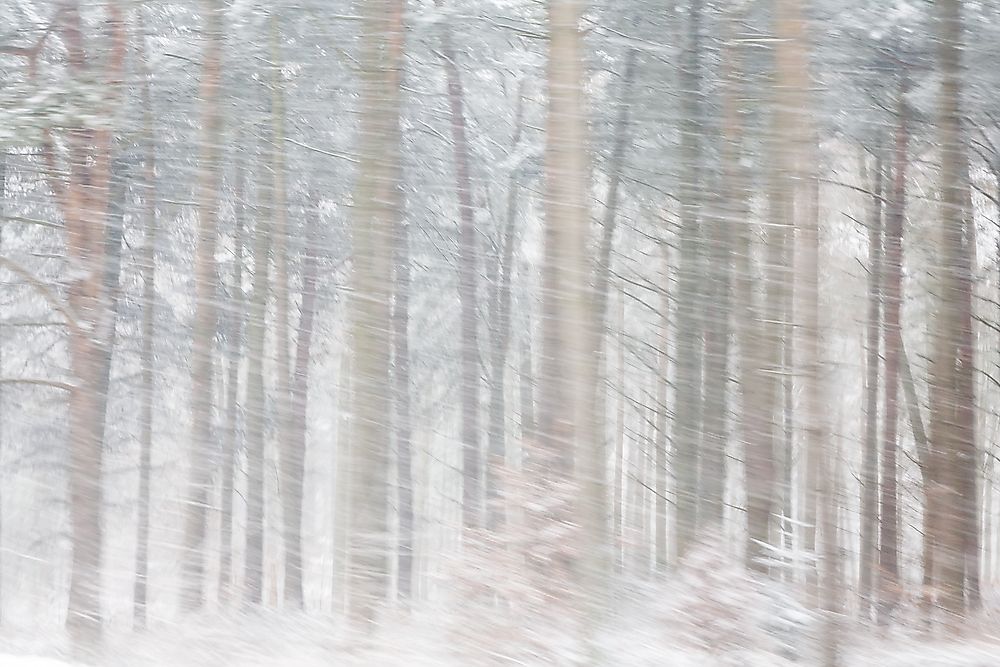What Is a Snow Squall?

What Is a Snow Squall?
A snow squall, or snowsquall, refers to an abrupt violent wind that is usually accompanied by snow, hail, or rain. Often likened to a whiteout, a snow squall closely resembles a blizzard but is localized to a certain area, does not last as long, and the accumulation of snow varies. Snow squalls can be described as the direct opposite of showers and thunderstorms that occur during the summer. While usually small, snow squalls can potentially be accompanied by intense snowfall.
Types of Snow Squalls
Lake-Effect Snow Squall
Lake-effect snow squalls are formed during winter when moisture-filled arctic air passes over warmer open waters. Consequently, convective clouds form and eventually result in heavy snowfall. This type of snow squall is primarily formed around the warm Great Lakes region and has the potential of producing considerable localized snowfall. In some cases, a thunder-snow, which is a snow shower accompanied with thunder and lightning, can form when lake-effect snow squalls occur in early winter. While the name originated from the Great Lakes region, lake-effect snow squalls are not exclusive to that region. Any lake around the world can produce a snow squall. The region affected by this type of snow squall is known as a snowbelt.
Several conditions must be met for the formation of lake-effect snow squalls. First, there has to be a temperature difference of at least 23 °F between the lake water and 850 millibar. The surface temperature should be close to the freezing point, the lake should not be frozen, and the path over the water body must be at least 62 miles. Last, the directional wind gradient with height has to be less than 30° from the surface to a height producing a pressure of 850 millibars.
Frontal Snow Squall
Frontal snow squalls are usually characterized by a relatively short duration, which is typically less than half an hour. However, frontal snow squalls have a narrow convective line and can extend across long distances. Like lake-effect snow squalls, frontal snow squalls have the potential of developing into a thunder-snow, especially when the conditions allow for the formation of an embedded cumulonimbus cloud.
Impacts of Snow Squalls
Snow squalls can be dangerous for drivers, airplanes, or other forms of travel. They are particularly dangerous because they form abruptly and with little warning. This means that drivers quickly lose visibility due to whiteouts. In some cases, snow squalls have the ability to travel at speeds of approximately 100 mph or higher. Sudden braking by motorists can also lead to serious collisions.
Lake-effect snow squalls are particularly problematic since they can lead to road blockages and halt city operations. For example, a heavy snow squall in the US state of Michigan in January 2015 resulted in a pile-up of 193 vehicles along the I-94 highway.











